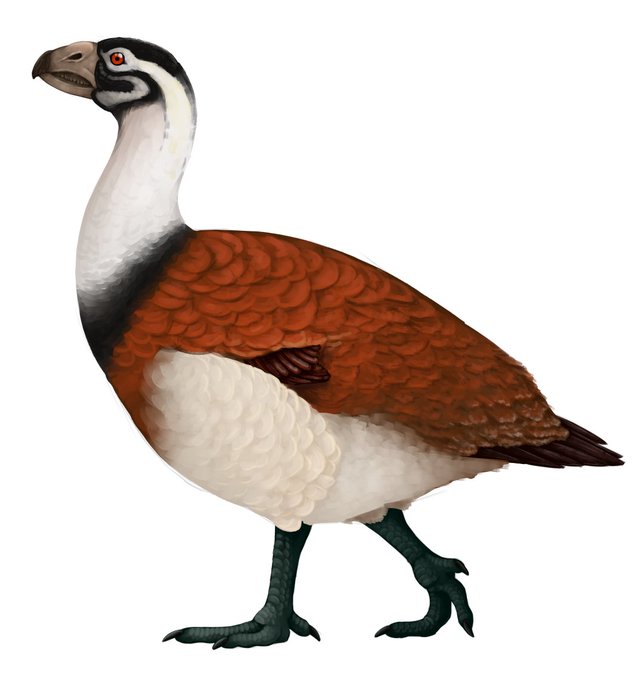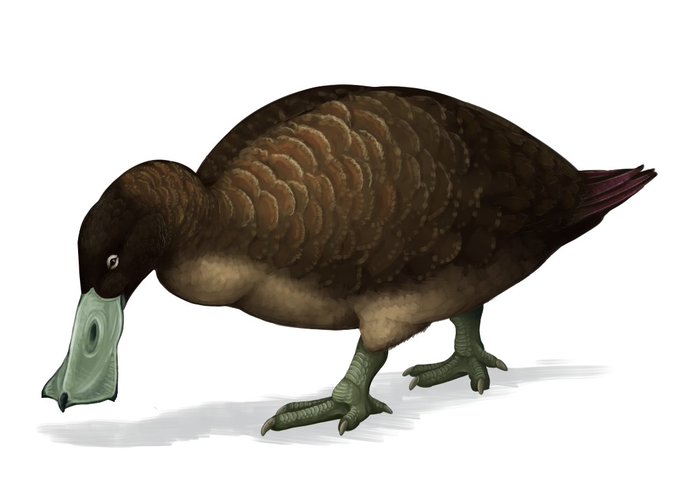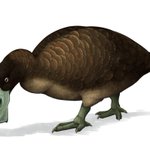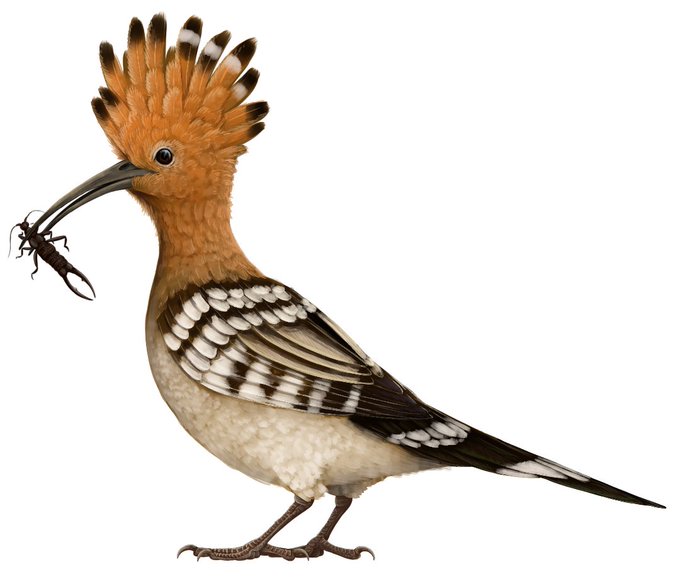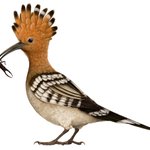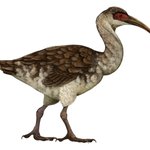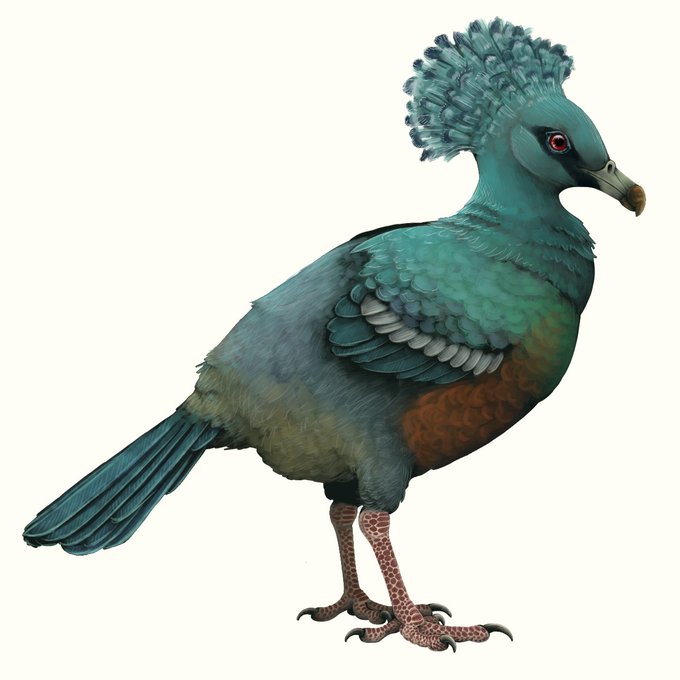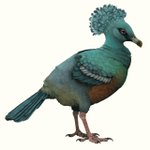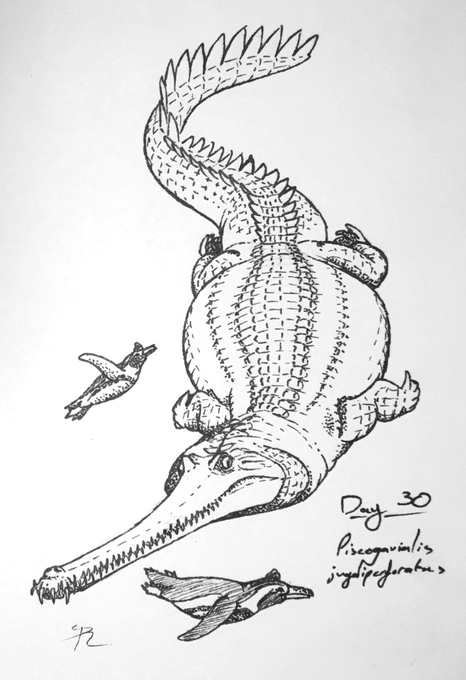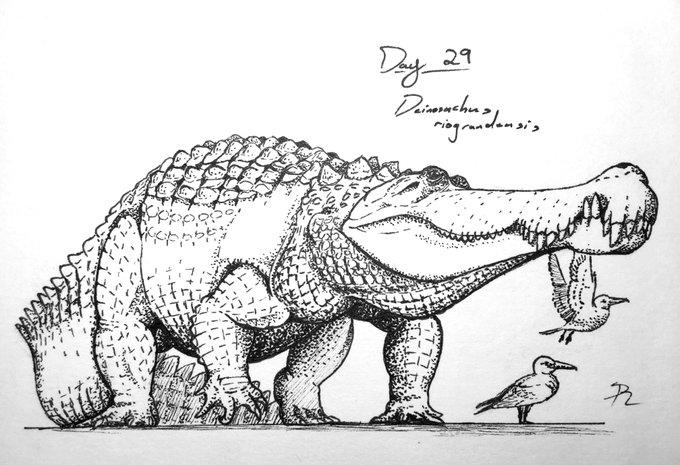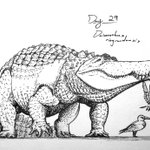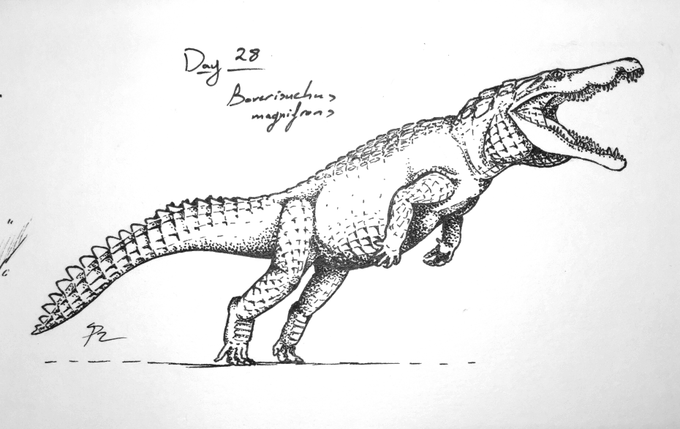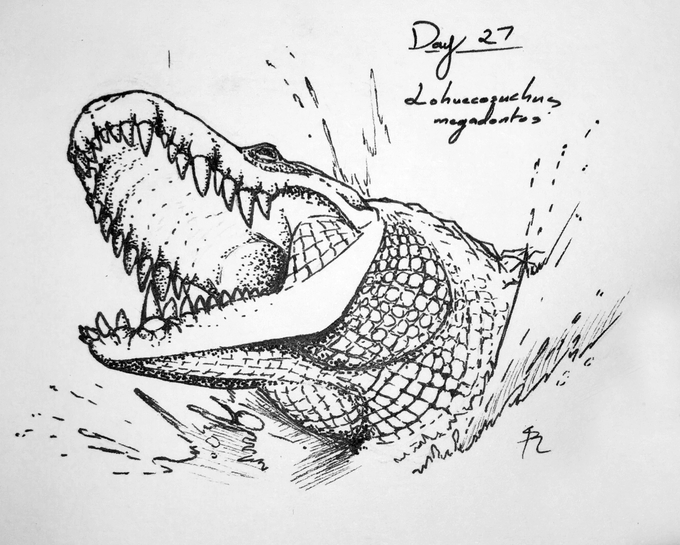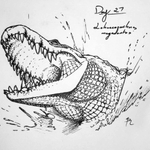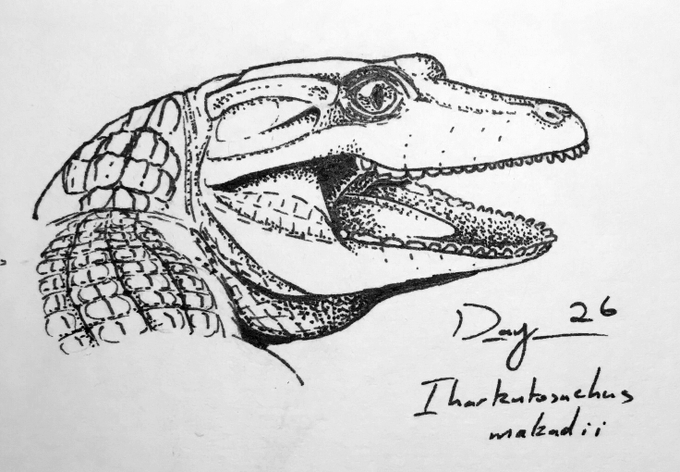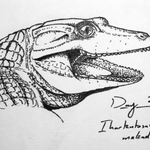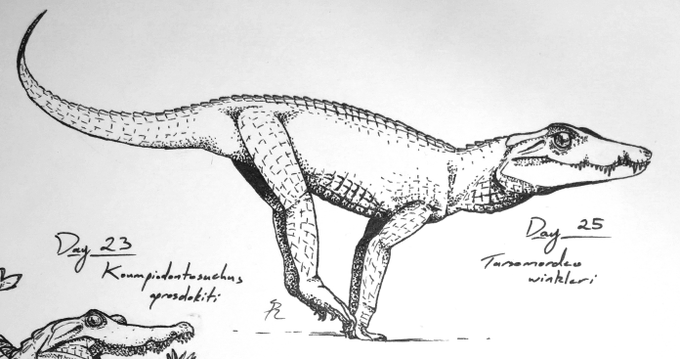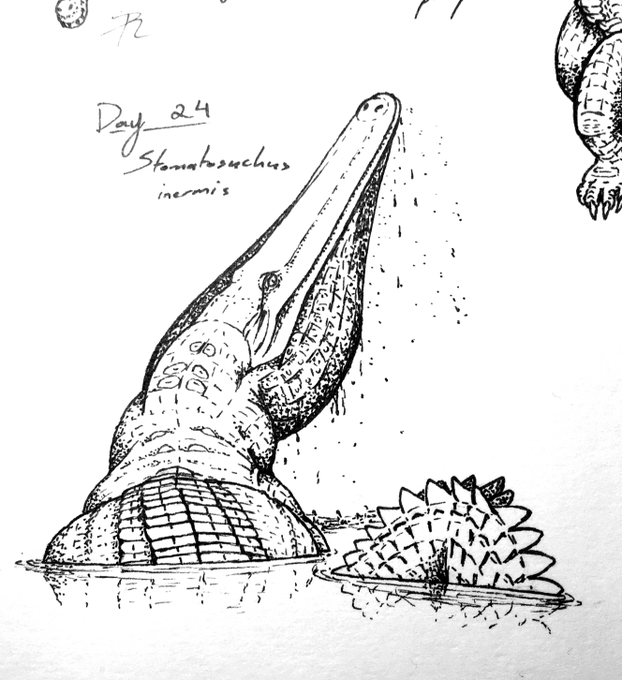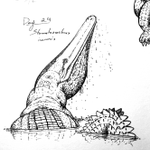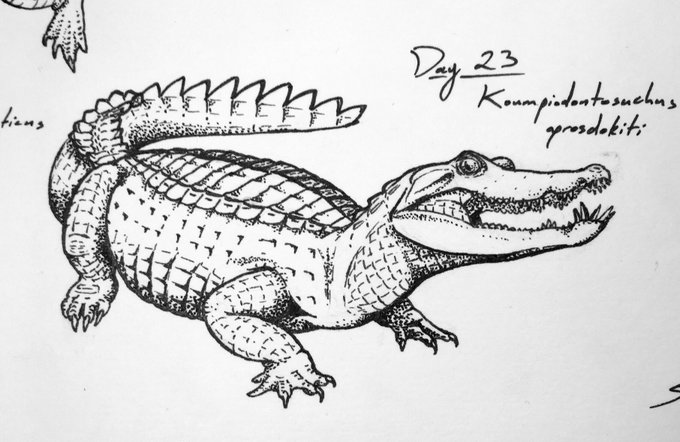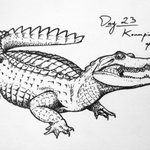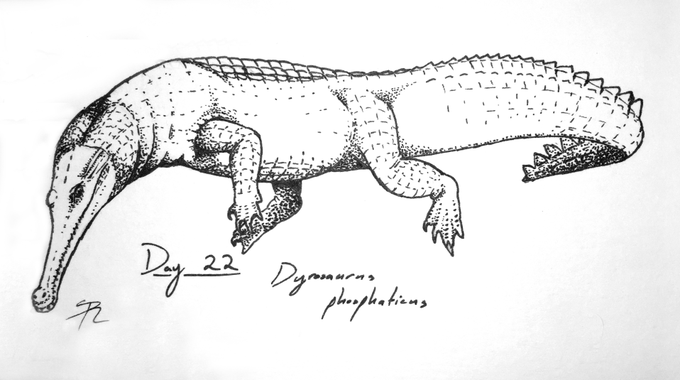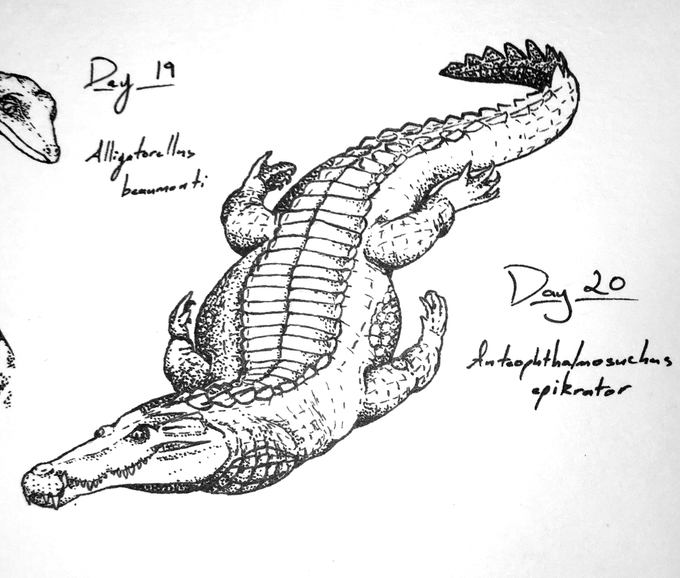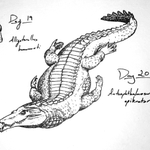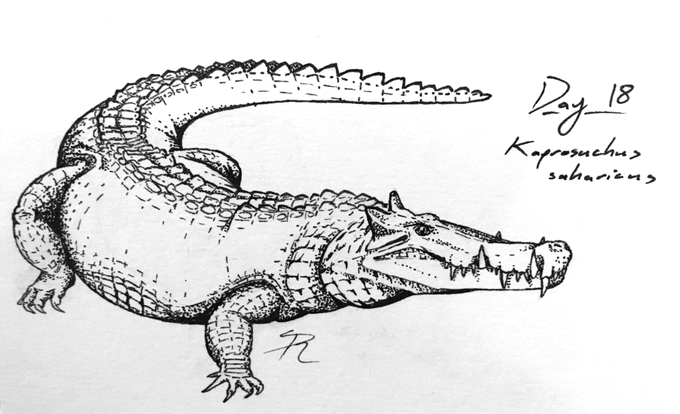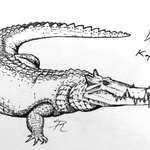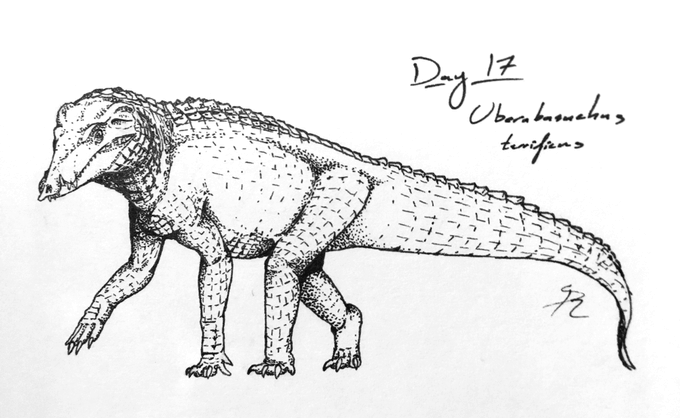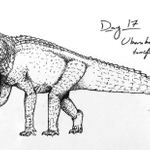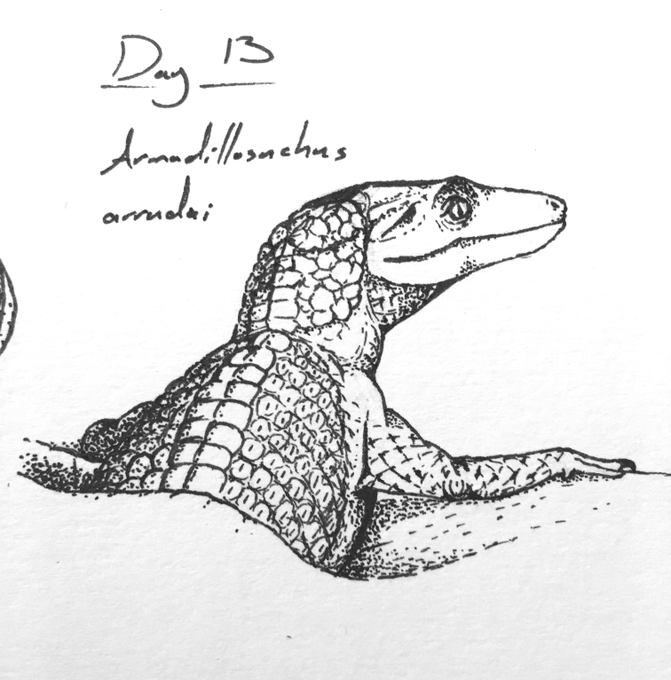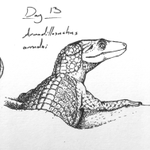He/him
- 266 following
- 2411 followers
- Follow
Ptaiochen, another Hawaiian duck (yeah, not a goose, duck) from Maui. It was a mao-nalo, a group of large flightless herbivores that seemingly filled similar roles to giant tortoises on other islands. #IslandFaunaWeek #paleoart [6/n]
Talpanas, literally the 'mole duck', was a flightless duck from Kaua’i. It had tiny eyes and poor vision, but made up for it with a broad, very sensitive tactile beak. Effectively a platypus-billed duck. #IslandFaunaWeek #paleoart [5/n]
The St Helena Hoopoe is from said island in the South Atlantic. It was a large hoopoe with small wings & was potentially flightless. It was alive as recently as the 1550s. Here it's eating a giant earwig, another extinct endemic from St Helena. #IslandFaunaWeek #paleoart [4/n]
Apteribis was a flightless ibis from Hawaii with tiny wings. Preserved feathers indicate it was mottled brown, suggesting it could be paedomorphic. With a long probing bill, it may have been Hawaii's equivalent of a kiwi. #IslandFaunaWeek #paleoart [3/n]
Natunaornis was a giant flightless pigeon from the island Viti Levu in Fiji and a relative of crowned pigeons. It was nearly dodo-sized, and though it wasn't as specialised, it likely went extinct for similar reasons. #IslandFaunaWeek #paleoart [2/n]
Day 31 of #Croctober #Inktober, & we've finally made it to an honest-to-goodness crocodile! Voay was from Madagascar, & may have only died out just 2000 years ago. It famously sported a pair of 'horns' over its ears, which I figured suited the occasion, happy Halloween!
Day 30 of #Croctober #Inktober is the giant sea-going Peruvian Miocene gavialid Piscogavialis, with penguins for scale. Gavialids used to be more widespread and diverse than they are today, particularly in South America.
For #Croctober #Inktober Day 29, it's the one & only #Deinosuchus, which needs no introduction & was recently redescribed this very year! It's also the first definitive crown crocodyilian on the roster, and was a distant relative to living alligators and caimans.
Boverisuchus for #Croctober #Inktober Day 28, the 'hoofed' predatory planocraniid, which are either true crocodylians or something very close. I'm not sure if anyone puts stock into them being facultatively bipedal anymore, but I don't think anyone would object to a lunge, right?
Onto allodaposuchids for #Croctober #Inktober Day 27, another European clade of crocs very close to the modern ones. Most would have looked a lot like them too...but then there's Lohuecosuchus megadontos, which had such comically large teeth it looks like a croc caricature.
Day 26 of #Croctober #Inktober is Iharkutosuchus. It was a hylaeochampsid, a group of European eusuchians close to living crocodylians. Its teeth were bulbous & was originally interpreted as durophagous, but complex mammal-like cusps and ridges suggest it was a herbivore instead!
#Croctober #Inktober Day 25 is the "ankle biter" Tarsomordero, a tiny 45-120cm long terrestrial croc from Early K Texas. It's representing paralligatorids, a diverse group otherwise thought to be semi-aquatic. Tarsomordeo then is one of the crocs' first *returns* to land
#Croctober #Inktober Day 24 is Stomatosuchus, a giant croc with a long flat snout, tiny teeth & slender jaws that *maybe* supported a pouch. These all suggest it fed by straining small animals from the water. Sadly, the only fossil was destroyed in WWII, so it remains a mystery
Day 23 of #Croctober #Inktober is Koumpiodontosuchus, a 'button-toothed' bernissarteriid. These small (~60cm) crocs had button-like teeth at the backs of their jaws for crushing hard shells. Their armour and vertebrae were also starting to look more like those of modern crocs.
Day 22 of #Croctober #Inktober is the dyrosaurid Dyrosaurus. Dyrosaurids were another group of marine crocs, & they survived the K-Pg & made it into the Eocene before dying out. With weirdly high spines & deep tails, I can't help but seeing them like weird scaly temnospondyls.
Day 21 of #Croctober #Inktober is Sarcosuchus, the famed giant 'SuperCroc'. Sarcosuchus was a pholidosaurid, a lineage of freshwater & marine predators. Sarcosuchus was one of the former, & at 8-9 m long or so, could easily have preyed upon large dinosaurs.
#Croctober #Inktober Day 20, the goniopholidid Anteophthalmosuchus. Goniopholidids have often been treated as modern crocs expys in #paleoart, but can readily be distinguished by their paired broad osteoderms, long forelimbs, & at least in this chap's case, forward-facing eyes
For #Croctober #Inktober Day 19 we have Alligatorellus the atoposaurid, sat atop its rock & looking a tad more pensive than I meant it to. Alligatorellus was a teeny (~1ft) terrestrial-(ish?) island-dwelling croc from Late J. Europe, including the famed Solnhofen.
Day 18 of #Croctober #Inktober is Kaprosuchus, the infamous 'BoarCroc'. This one's not quite as leggy as it's usual depiction, but with a skull and fangs like that it's always going to be a gnarly animal.
For #Croctober #Inktober Day 17, we have Uberabasuchus representing peirosaurids, another group of leggy terrestrial crocs mostly from Late Cretaceous South America. They had tall, narrow snouts & funny little overbites, including a pointy little "beak" thing in Uberabasuchus
Sebecus for #Croctober #Inktober Day 16, a 2m long terrestrial predator from Eocene South America. Sebecids lasted into the Miocene & reached lengths of up to ~6m before dying out & finally letting the mammals know peace. (Some dodgy perspective on the neck maybe, but oh well)
Onto sebecids and co. for #Croctober #Inktober Day 15, a mostly Cenozoic group of terrestrial crocs. The group is famously from South America, but little (~1.5 m) Bergisuchus, with its tiny teeth & one big 'canine' here was from Eocene Europe! (Including the Messel pit!)
#Croctober #Inktober Day 14, with the terrestrial predator Baurusuchus. At 2-3 m with long, with upright legs and a deep, powerful skull with large 'canines', Baurusuchus was a formidable predator. A call back to the 'rauisuchians' of #Stemcroctober...Happy #NationalFossilDay!
Day 13 of #Croctober #Inktober with the aptly named sphagesaurid Armadillosuchus from Late K Brazil. It was heavily armoured, even for crocs, with a shield behind its head and bands of bony osteoderms down its body. Its teeth imply it was an omnivore
#Croctober #inktober Day 11 is Yacarerani, a small notosuchian with forward pointing "rabbit-like" incisors. Two skeletons were found together on top of two intact eggs and shell fragments, which may have been a nesting burrow!
正しいカテゴリを運営へ報告する
このツイートに主として含まれるのは、【***】ではなく、以下の画像です。
- 一般向けのイラストおよびマンガ。造形物に描かれた平面のイラスト等もここに含みます。
- コスチューム・プレイ(仮装)をした人物の写真。衣装のみの写真も含む。
- 立体造形物全般。模型・フィギュア・プラモデル・ドール・ぬいぐるみ・キャラ弁・ハンドクラフト等
- 【イラスト・マンガ】のうち、センシティブな内容(アダルト表現・グロテスク表現)を含むもの。
- 風景写真・ゲームやTVのキャプチャ・スクリーンショット・文字のみの画像等、上記にあてはまらないもの。

This site is protected by reCAPTCHA and the GooglePrivacy Policy and Terms of Service apply.
正しいカテゴリを運営へ報告する
報告ありがとうございました!
内容を確認のうえ、対応いたします。


